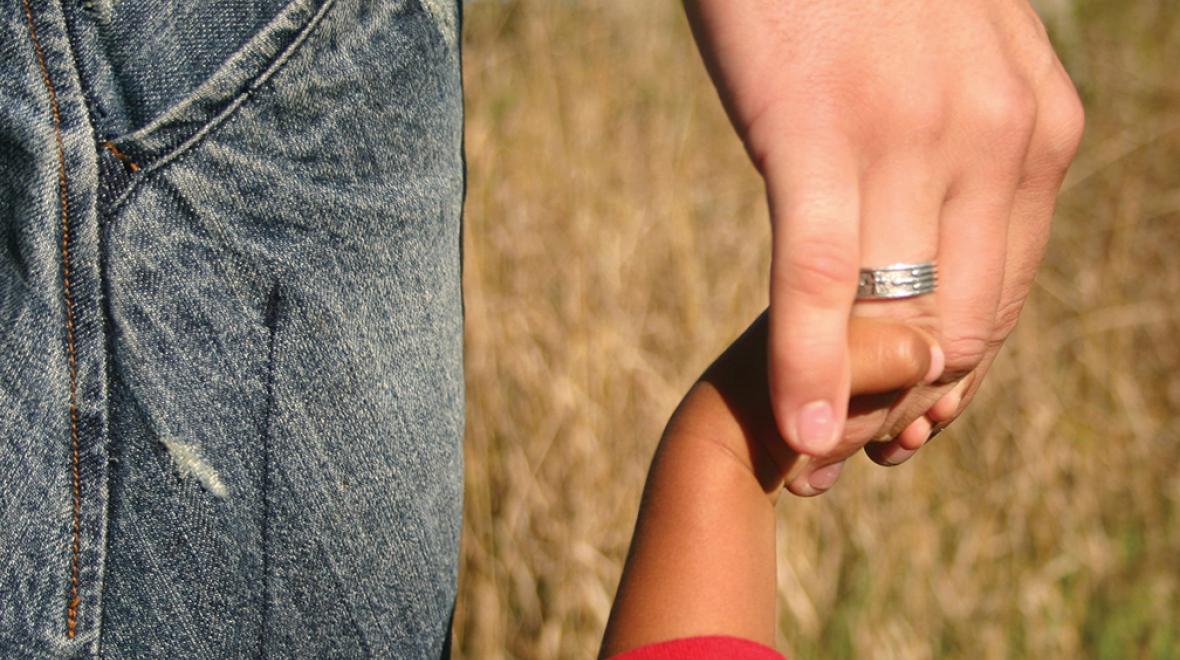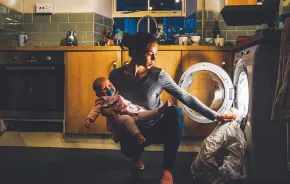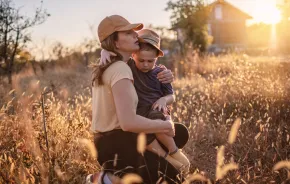
Two decades ago, it seemed like everyone knew someone who had just adopted a child from China, India or Ethiopia. But lately those families seem to have become quite rare. It turns out that’s because they are. International adoption rates had dropped to a trickle even before the pandemic completely shut down most programs. Now, many people worried about the children in Ukraine are beginning to think about international adoption again. Should they be? Why has international adoption become so rare? And, more importantly, what is happening to all the children who might have been adopted?
International adoption
In the mid-1950s, Henry and Bertha Holt, an evangelical couple from Oregon, began sending supplies to Korea to help children orphaned by the Korean War. While continuing to provide services for orphans and at-risk families, the Holts spearheaded an act of Congress to create a legal framework for bringing Korean orphans to America for adoption. Holt International became the country’s first international adoption agency, and the Holts’ work set the legal and cultural stage for international adoption as we know it today.
In 1980, China’s one-child rule created a new population of abandoned children. A decade later, Chinese orphanages, filled primarily with healthy baby girls, opened to international adoption. Adoption numbers climbed steadily through the turn of the century, peaking at almost 23,000 international adoptions in 2004.
The adoption myth that parents from rich countries were saving the lives (and even souls) of abandoned babies in poor ones is rooted as much in colonialism as in reality. Experts now understand that the best interests of children are nearly always met by keeping birth families together. When this is not possible, adoption by relatives or at least within the child’s birth culture is preferable. Even among its proponents, international adoption is seen as a last resort for children who would otherwise remain in institutional or temporary situations.
The Hague Convention
“As we started adoption programs in these countries, we also learned that there was — and there is still — vast needs of other services beyond adoption. We see that the causes that lead to children being abandoned or relinquished by birth parents are because of poverty, stigma towards single mothers or pregnancy out of wedlock, or disability of children or the medical issues of birth parents,” says Thoa Bui, vice president of international programs for Holt International. “So, we started family-strengthening programs to offer the services and support to birth parents. We focus on trying to preserve children with their birth families if possible.” Today, Holt has programs in 16 different countries, but only 11 of them include international adoption services.
Since 2008, international adoption in the United States has been governed by The Hague Convention on the Protection of Children and Co-operation in Respect of Intercountry Adoption. The Hague Convention was designed to address horror stories of corruption, coercion and exploitation by those who treated adoption like an unregulated global baby market. It also established global adoption best practices that prioritize the interests of the child.
“The Hague Convention protects the interests of the children and of the birth parents in many ways. There is a built-in procedure for parental consent,” says Bui. It requires significantly more work by agencies and adoptive families while providing assurance that their future child is genuinely in need of a new family.
Homeland improvements
The Hague Convention has even more extensive requirements for birth countries than for adoption agencies, but it only formalized changes that were already taking place globally.
“The No. 1 reason that we see [decreasing international adoptions] is domestic adoption increased significantly in a lot of countries,” says Bui, “Nowadays, there are far more local adoptions than intercountry adoptions. There is more openness of local people toward adoption. The cultures have changed to embrace bringing in people who are not blood-related.”
Changing attitudes and economics have both enabled more people in birth countries to become adoptive parents and helped more birth families stay together.
“Foreign governments have improved their child welfare systems significantly, with more budget for services like Holt’s for birth families,” says Bui. At the same time, cultural attitudes toward single mothers and unwed pregnancies have softened.
“This is a big shift in many countries as well,” she says. In the past, social stigma made it hard for mothers to find either work or child care. Now there is much more family and community support for women trying to raise children alone.
Ukraine and crisis adoption
International adoption has historically grown in the aftermath of armed conflict — in Korea, in Vietnam, in Ethiopia — so it’s not surprising that the invasion of Ukraine has led to renewed interest. However, it’s impossible during a crisis to meet the requirement of The Hague Convention to confirm a child is orphaned before being considered for adoption. Yet it is most important during times of chaos when children are at their most vulnerable.
“In a crisis situation, we have to understand that many of those children still have birth parents and deserve to go back to their birth parents,” says Bui. The first priority is the immediate safety and temporary care of lost children. When it is safe, every effort must be made to reunify children with surviving birth parents. Rushing to Ukraine to secure adoptions now is unethical at best and possibly criminal.
International adoption today
Despite everything, international adoption is not obsolete.
“A lot of children out there are in need of permanent families, and there will continue to be a need,” says Bui.
In the past, adoptive parents often discovered their children had undiagnosed special needs. Nowadays, the first step in adoption is a thorough medical and developmental assessment. Bui notes that prospective families in birth countries are often either unwilling or unable to adopt children with special needs.
“We are here to find families for them because every child deserves a permanent family,” says Bui.
The Hague Convention requires more training for adoptive parents than was even available in the past. Today, parents receive detailed information about their child’s medical and special needs; are taught about the harm done by “color-blind” parenting; and learn about bonding and attachment with older children. Some agencies, such as Holt, also offer long-term support for adoptive families.
“Adoption doesn’t end at placement,” says Bui.
International adoption is much more complicated than the adoption myth that informed previous generations of adoptive parents. But the reality of building a family is always messier than the dream of it. For prepared parents with clear-eyed expectations of its unique challenges, international adoption is still a beautiful way to build a family.
Additional resourcesHere are a few resources and voices you should check out if you are considering international or transracial adoption: The Adopted Life — Angela Tucker is a transracial adoptee who offers a variety of services to adoptees and families. Check out her website for more information, as well as links to her excellent series of interviews with transracial adoptees of all ages. Pact — Pact is nonprofit adoption agency that exists to serve adopted children of color. Its website provides excellent resources on a wide variety of topics, including international and transnational adoption. "If I lived here, I'd be home now" — A short but powerful audio diary from the radio show and podcast This American Life (episode 691, "Gardens of Branching Paths") documents the experience of a woman who travels to South Korea to meet her birth mother. |











